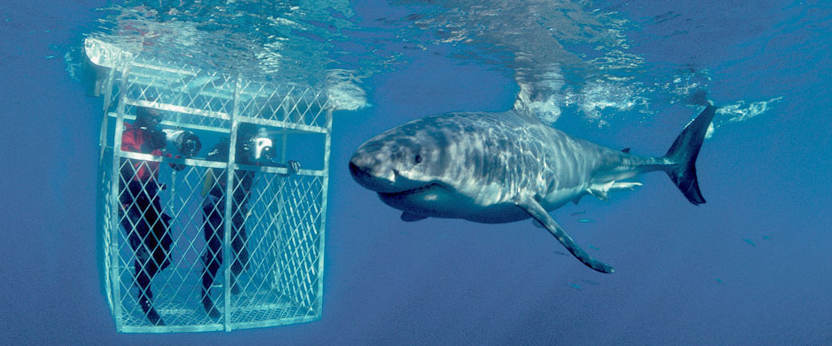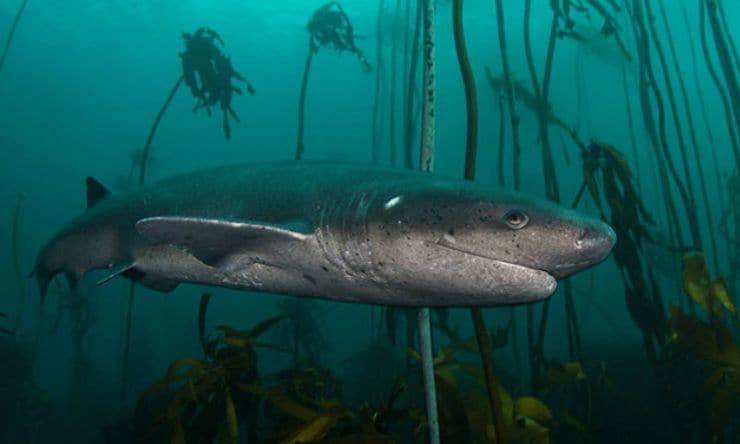South Africa is one of the most interesting places for diving in the world.
Diving in South Africa, i.e. entering the underwater world of the two oceans – the Atlantic and the Indian Ocean – is striking for its diversity and number of large marine animals, sharks, whales, dolphins, seals, turtles and many other creatures of the sea.
The Southern tip of Africa is a recognized cemetery of ship wrecks. Here are also many coral reefs. And of course South Africa has amazing Game and Nature Reserves, which allows visitors to combine diving with an unforgettable land safari.
Diving is primarily done with daily boat trips, i.e. the boat returns to shore after diving. One of the features of the local diving trips are fairly large coastal waves, which boats have to master to get to the dive sites. The main and most interesting dive areas in South Africa are:
Atlantic Ocean:
• Cape Town, Cape Point and the Cape Peninsula (Western Cape)
• Gansbaai (Western Cape)
Indian Ocean:
• Margate (KwaZulu Natal) • Sodwana Bay (KwaZulu Natal) • Umkomas (KwaZulu Natal) • Umshlanga Rocks (KwaZulu Natal) • Rokteyl Bay (KwaZulu Natal) • Mossel Bay at the Garden Route • Port Elizabeth (Eastern Cape)
We offer a 10 day diving tour at the coasts of KwaZulu Natal and Mozambique. Please contact us for details.
Diving in Cape Town
According to many tourists, Cape Town is the most bright and cosmopolitan city of South Africa. With a variety of attractions, restaurants, clubs and shops, she is among the 3 most visited places in South Africa. Diving in this area largely depends on the direction of the winds, which blows very often at the southern point of the African continent. The coastal waters of Cape Town, are dotted with sunken ships, as well as kelp forests and soft corals.
We offer Seven Gill shark diving excursions, please contact us.
The water temperature rarely exceeds 18 C (average 14C). In winter (May-August) dives are usually performed in False Bay (the inner side of the Cape Peninsula), and the rest of the year on the west coast of the Peninsula (the side of Cape Town).
VULCAN ROCK: Clean water, but can be quite cold (10-12 C). The maximum depth of 40 meters. Corals and a large colony of seals.
ROMAN ROCK: Also a large colony of fur seals, as in the Vulcan Rock. Located on the outer side of the Cape Peninsula. The maximum depth is 45 meters .
WRECKS OF SMITSWINKEL: 5 ships sunk in 1970 and form a magnificent, artificial reef. Here sunk the frigates SAS Transvaal and SAS Good Hope. The Rockeater, a carrier of diamonds (the most interesting of the five merchant ships), The Princess Elizabeth and The Oratava, both fishing vessels. Schitaetsya, one of the most spectacular sites in South Africa. The maximum depth is 40 meters.
LUSITANIA – Portuguese ship that sank in 1911, a great dive for experienced divers. The maximum depth is 37 meters.
WHITTLE ROCK – Corals, sometimes there are great white sharks, a very beautiful site and little visited, because of the fairly large distance from the shore. The maximum depth is 35 meters.
Two Oceans V & A WATERFRONT Aquarium: Two Oceans are surrounding South Africa, the warm Indian Ocean and the cold Atlantic. The height of the aquarium is 2 floors, with more than 300 species of fish, seals and African penguins. Daily at 10:00, 12:00 and at 14:00 you can make a dive in the 2 million l tank. Diving is carried out with a guide. The aquarium is home to sharks, turtles and stingrays. Up to 3 people at a time, diving should be booked in advance.
Shark Cage Diving in Gansbaai or Simonstown.
The possility to see Great White sharks is one of the highlights of diving in South Africa. Over the past few years, shark diving develops at a tremendous pace, being an organic part of many environmental programs to protect marine animals. Gansbaai (located ca. 170 km from Cape Town) is considered the unofficial world capital of Great White sharks. This is one of the few places in the world, where a fairly large population of this formidable predators remained. The procedure for diving in Gansbaai is quite simple, the boat with 5-6 divers goes from the bay in about 30 minutes Dyer Island. There is a large colony of sea lions. The drop a big metal cage with an open top in the water, specially designed for these dives, for which no diving experience is required. Watching the sharks out of the cage, one can get acquainted with this amazing creatures, which became widely known thanks to such films as “Jaws.” One should remember that the Great White is not a bloodthirsty killer, but a predator is in its natural habitat, who is living on Planet Earth for millions of years. The optimal season for diving in Gansbaai is from early May to middle of November. Visibility under water is normally 10 meters, but the water temperature in this time period rarely exceeds 16° C, so a 7mm suit (preferably with a heater) is recommended. At other times you cant watch sharks because the visibility is less than 2 meters.


